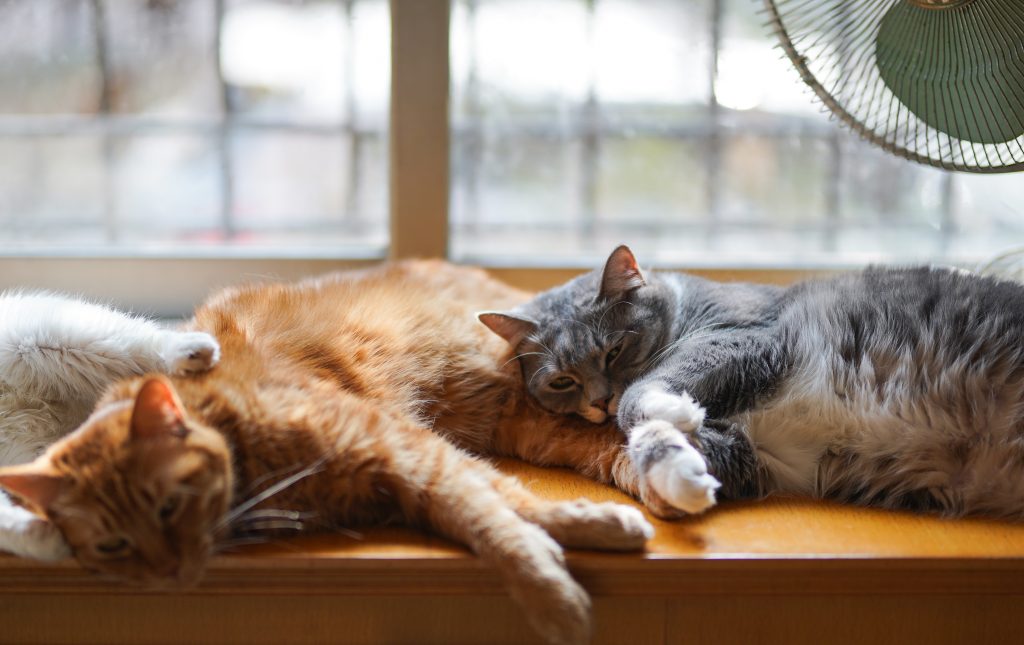Introduction: Cats, with their mysterious and independent nature, communicate through a nuanced language of body movements, vocalizations, and expressions. Learning to interpret a cat’s body language is key to building a strong bond and ensuring their well-being. In this comprehensive guide, uncover the subtle signals that reveal your cat’s emotions and needs, ranging from happiness to illness.
Section 1: Happy Cat Body Language
- Posture: Relaxed limbs and an outstretched tail when lying down.
- Eyes: Round or partially closed eyes with narrow pupils; slow blinking as a sign of trust.
- Ears: Upright and forward-facing.
- Tail: Pointed straight up with a curl at the tip.
- Vocalizations: Purring, meowing, and trilling to express contentment.

Section 2: Playful Cat Body Language
- Posture: Crouching, wiggling rear-end, and hunting-like movements.
- Eyes: Big eyes with dilated pupils.
- Ears: Upright and forward.
- Tail: Flicking from side to side during engaged play.
- Vocalizations: Playful meows and trills.
Section 3: Stressed Cat Body Language
- Posture: Stiff and tense body held low to the ground; displacement behaviors.
- Eyes: Wide or narrowed eyes.
- Ears: Rotated to the sides or angled backward.
- Tail: Held close to the body or thrashing.
- Behavior: Urinating or defecating outside the litter box.
Section 4: Fearful Cat Body Language
- Posture: Crouching low to the ground, making themselves look smaller.
- Eyes: Widened with dilated pupils.
- Ears: Angled backward or sideways.
- Tail: Wrapped tightly around or underneath the body.
- Vocalizations: Growling, hissing, yowling, or shrieking.
Section 5: Aggressive Cat Body Language
- Posture: Arching the back with fur standing up (piloerection).
- Eyes: Widened or narrowed; direct stare.
- Ears: Turned back or flat against the head.
- Tail: Flicking or thrashing.
- Vocalizations: Growling, hissing, spitting, and swatting.
Section 6: Sick or Painful Cat Body Language
- Posture: Hunched body with tucked legs; tense appearance.
- Eyes: Squinted or shut; glassy or dazed expression.
- Ears: Held low or rotated to the sides.
- Tail: Held underneath or wrapped closely around the body.
- Vocalizations: Increased meowing or yowling; purring may indicate pain.
Conclusion: Becoming Fluent in Cat Communication Understanding a cat’s body language goes beyond simple decoding; it’s a journey into the feline psyche. By observing their postures, expressions, and vocalizations, pet parents can enhance their connection with their cats, address their needs promptly, and ensure a harmonious relationship. Stay attuned to the subtle nuances of your cat’s communication, creating a language of love and understanding that transcends the boundaries between humans and their feline companions.**


